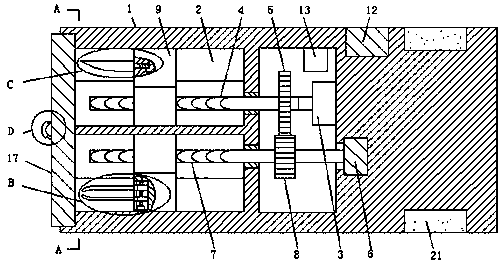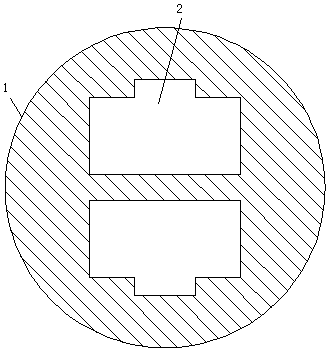Medical surgical instrument
A surgical operation and instrument technology, applied in the field of medical surgical instruments, can solve the problems of increasing burden and wasting time, and achieve the effect of avoiding dust pollution and simple operation
- Summary
- Abstract
- Description
- Claims
- Application Information
AI Technical Summary
Problems solved by technology
Method used
Image
Examples
Embodiment Construction
[0024] The following will clearly and completely describe the technical solutions in the embodiments of the present invention with reference to the accompanying drawings in the embodiments of the present invention. Obviously, the described embodiments are only some of the embodiments of the present invention, not all of them. Based on the embodiments of the present invention, all other embodiments obtained by persons of ordinary skill in the art without making creative efforts belong to the protection scope of the present invention.
[0025] see Figure 1-5 , a medical surgical instrument, including an operating rod 1, the side wall of the operating rod 1 is provided with a circular groove, the inner wall of the circular groove is provided with two symmetrically arranged chute 2 with a T-shaped cross section, and the inside of the operating rod 1 There is a transmission chamber, and the inner wall of the transmission chamber close to the chute 2 is provided with two rotating h...
PUM
 Login to View More
Login to View More Abstract
Description
Claims
Application Information
 Login to View More
Login to View More - Generate Ideas
- Intellectual Property
- Life Sciences
- Materials
- Tech Scout
- Unparalleled Data Quality
- Higher Quality Content
- 60% Fewer Hallucinations
Browse by: Latest US Patents, China's latest patents, Technical Efficacy Thesaurus, Application Domain, Technology Topic, Popular Technical Reports.
© 2025 PatSnap. All rights reserved.Legal|Privacy policy|Modern Slavery Act Transparency Statement|Sitemap|About US| Contact US: help@patsnap.com



